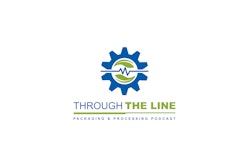
The package form used for compliance-prompting packaging is not necessarily new, says Walter Berghahn, president, SmartRmeds for Life, and the executive director of the Healthcare Compliance Packaging Council. He recalls, "The most notable early development of compliance-prompting packaging was the birth control compact, circa 1960.
"Those of us in the industry are continually scratching our heads that uptake [of compliance-prompting packaging] has not been more significant. No other drug can boast the compliance rates of the birth control pill." He points out that the oft-referenced argument that birth control adherence rates are so high (some say around 95%) because women understand the risk of pregnancy, "falls away rapidly when we consider organ-rejection drugs, [a condition with a higher risk than pregnancy-that being organ rejection and death], which have compliance rates in the 86-percent range."
Berghahn anticipates, "One of the biggest game changers today will come not from the drug manufacturer but from the other end of the supply chain, the caregiver, or more appropriately, the "payer" to whom the caregiver is responsible. As accountable care organizations and pay-for-performance models continue to evolve, the pressure will increase on the caregivers to find ways to increase medication adherence, which is directly related to the improved health outcomes that will directly affect their bottom line.
"They will simply have no choice but to seek out and demand solutions of industry. Today they are reaching for the solutions close at hand. Nurse practitioners are making phone calls, visiting nurses are loading pill reminder boxes, they are engaging text reminders, and all manner of simple electronic hints, but they haven't collectively hit upon improved packaging simply because they don't know to ask for it. This is a problem that the HCPC and many packaging companies are trying to fix."
Berghahn comments, "Reminders in various forms are great but until we hang the reminders directly on the package and put it in front of the patient, the family member and the caregiver we will have an open loop. Visual reminder and verification of dose taken will only come from calendarized packaging or eventually truly smart packaging with integrated electronics, but that is a bit down the road (although the prospect of scanning a bar code on your package via smartphone in connection with a social networking adherence program has certain appeal).
"In short, I think the driver for increased adoption for compliance-prompting packaging will not come from the start of the supply chain but from the end of the supply chain where there is economic pressure to improve outcomes-follow the money."
(The photo here represents an example of a compliance-prompting pharmaceutical pack, and is provided by AndersonBrecon.)
"Those of us in the industry are continually scratching our heads that uptake [of compliance-prompting packaging] has not been more significant. No other drug can boast the compliance rates of the birth control pill." He points out that the oft-referenced argument that birth control adherence rates are so high (some say around 95%) because women understand the risk of pregnancy, "falls away rapidly when we consider organ-rejection drugs, [a condition with a higher risk than pregnancy-that being organ rejection and death], which have compliance rates in the 86-percent range."
Berghahn anticipates, "One of the biggest game changers today will come not from the drug manufacturer but from the other end of the supply chain, the caregiver, or more appropriately, the "payer" to whom the caregiver is responsible. As accountable care organizations and pay-for-performance models continue to evolve, the pressure will increase on the caregivers to find ways to increase medication adherence, which is directly related to the improved health outcomes that will directly affect their bottom line.
"They will simply have no choice but to seek out and demand solutions of industry. Today they are reaching for the solutions close at hand. Nurse practitioners are making phone calls, visiting nurses are loading pill reminder boxes, they are engaging text reminders, and all manner of simple electronic hints, but they haven't collectively hit upon improved packaging simply because they don't know to ask for it. This is a problem that the HCPC and many packaging companies are trying to fix."
Berghahn comments, "Reminders in various forms are great but until we hang the reminders directly on the package and put it in front of the patient, the family member and the caregiver we will have an open loop. Visual reminder and verification of dose taken will only come from calendarized packaging or eventually truly smart packaging with integrated electronics, but that is a bit down the road (although the prospect of scanning a bar code on your package via smartphone in connection with a social networking adherence program has certain appeal).
"In short, I think the driver for increased adoption for compliance-prompting packaging will not come from the start of the supply chain but from the end of the supply chain where there is economic pressure to improve outcomes-follow the money."
(The photo here represents an example of a compliance-prompting pharmaceutical pack, and is provided by AndersonBrecon.)






















